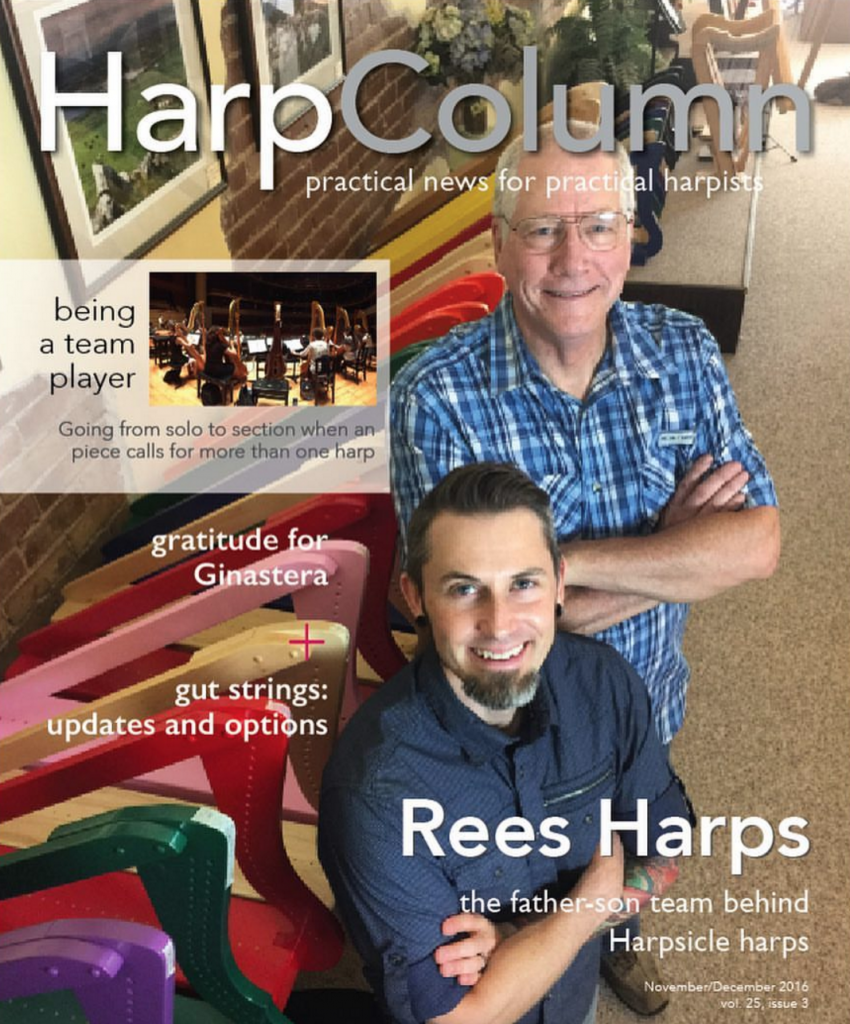Sitting by myself in the back of the orchestra, it’s hard not to be a bit envious. The cellos, the horns, the percussion—pretty much everyone else on stage is part of a section except me. I don’t want to throw a pity party here, but sometimes I think it would be nice to have a stand partner like the strings do or a fleet of identical instruments beside you to create a huge sound—like the 80 violins on stage. Okay, I know there aren’t really 80 violins, but there are so many it seems that way. It hardly seems fair as I sit alone on what can feel like an island between the 80 violins and the booming percussion.
However, with apologies to John Donne, no harpist is an island. Obviously the beauty of playing in an orchestra is having a role in something bigger than yourself. But it sure is fun when the harp’s ranks grow to two, three, even four, giving you a legitimate section of harps to complement the other sections in the orchestra.
Playing in a section of harps is a much different experience than being the lone harpist. It requires specific skills that are different than those needed for solo parts
I like a big, juicy solo part as much as the next harpist, but you just can’t beat the camaraderie of another harpist or two to share fingerings, commiserate with tuning troubles, or even just to chat with during breaks. And, as we all know, there is safety in numbers. It’s a lot easier to make a big, exposed entrance with another harpist by your side. The harps can really cut through when it’s amplified two or three times. Get lost? Your neighbor can help bail you out. Miss a pedal? Blame it on the other harpist. Just kidding…but you get the idea.
Playing in a section of harps is a much different experience than being the lone harpist. It requires specific skills that are different from those needed for solo parts. The problem for harpists is that there aren’t many opportunities to hone the special ensemble skills required to be a stellar section player. There just aren’t that many orchestral works that call for more than one harp. We also don’t have the same tradition of chamber music as strings, woodwind, and brass, so even small ensemble opportunities for extra practice are hard to come by.
Regardless of your level of experience in a harp section, when you get a call to play Symphonie Fantastique or Mahler 8, you must be ready to not only play your part, but execute your role in the harp section. Because harpists don’t get as much section experience as our orchestral counterparts, preparation is critically important. There is a fabulous article in this issue to prepare you to achieve sectional success in “Solo to Section” on pg. 18.
“The essence of a good ensemble performance is seamlessness,” says author Elizabeth Volpé Bligh. “It should sound like the music is being made by a collective consciousness.” Bligh should know—the Vancouver Symphony Orchestra principal harpist has played in countless harp sections during her 40-year career.
Bligh talks to orchestral players around the world about their advice on everything from etiquette to tuning, and every other conceivable consideration when you are playing with fellow harpists. My favorite nugget of wisdom in the article comes from Dallas Symphony Orchestra principal harpist Emily Levin: “The opportunity to play with another harp, or even six, is fantastic. The experience should be enjoyed!”
Despite the extra preparation and additional considerations required, playing in a section of harps is a special experience well worth the effort. After all, the more harps the merrier! •






